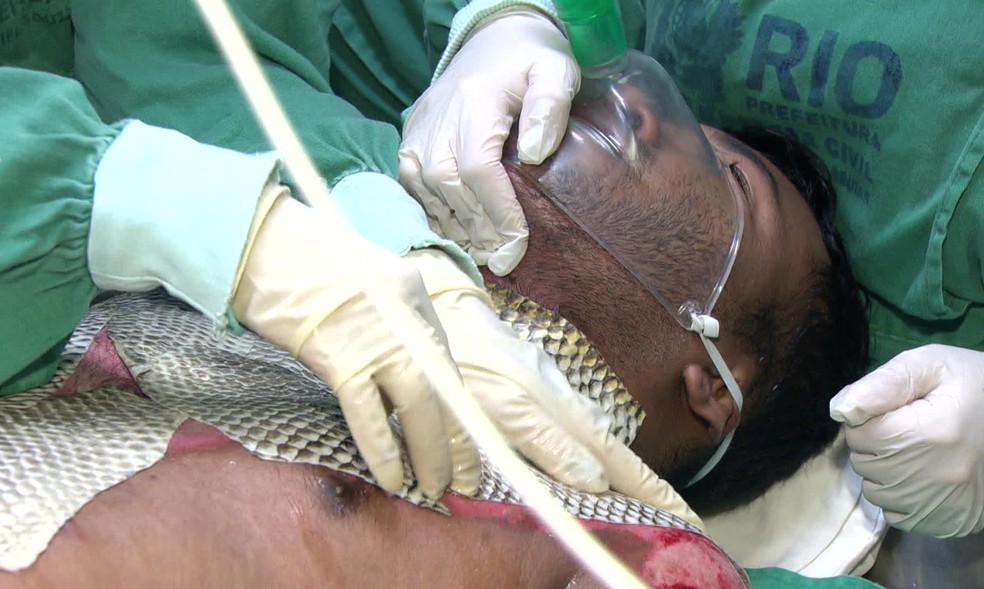RIO DE JANEIRO, BRAZIL – Researchers of the Tilapia Skin Project, of the Federal University of Ceará (UFC), are conducting a campaign to sensitize the Brazilian authorities to ease the shipment of the full stock of 40,000 cm² of tilapia skin to help the victims of the explosion in Beirut, capital of Lebanon, which left 4,000 injured and over 100 dead on Tuesday, August 4th.
The research is being conducted at the Center for Research and Development of Drugs (NPDM), under the coordination of Dr. Odorico de Moraes.
The studies developed by the UFC prove the efficacy of using tilapia skin in 2nd and 3rd-degree burns and skin lesions, acting as a “biological dressing” in the healing process.

Biologist Felipe Rocha, the project’s researcher, explains that there must be a consensus between the two nations’ authorities in order to ship the material. “As it is research material, the Ministries of Health of the two countries need to contact each other and authorize its shipment and use. But the research is well advanced and the efficacy results have already been confirmed and published in national and international articles,” he said.
According to researcher Carlos Roberto Paier, tilapia skin is an experimental product, not yet authorized by the National Health Regulatory Agency (ANVISA), which is why sending the material is still dependent on bureaucracy.
This is not the first time that a product is intended to be shipped abroad. Last year, the team tried to help in the rescue of victims of an accident in Colombia, but there were obstacles with that country’s legislation, which ultimately prevented the shipment.
“A company must be interested in technology transfer. If a company acquires this technology and starts to produce tilapia skin industrially, the product can be commercialized and will be inspected by ANVISA”, he explains.
The researcher clarifies that there are other types of treatment for burns, such as through human skin. However, stocks are very low, particularly in pandemic times, which also makes it more costly. “In Brazil, there are only two human skin banks, in São Paulo and Rio Grande do Sul”, he concludes.
High regeneration potential
Clinical studies conducted on over 350 patients have shown that tilapia skin has a high regenerative potential, reduces pain in patients, and reduces dressing changes and clinical operating costs. Its use is recommended for the treatment of 2nd and 3rd-degree burns.
According to one of the research coordinators, Dr. Edmar Maciel, treatment using tilapia skin works as a temporary dressing and prevents damage as contamination. “It acts as a temporary dressing that prevents dressing change, reduces fluid loss and contamination of the external environment into the wound. Depending on the depth of the burn, recovery can occur within a range of two days to a month and a half,” he explained.
Use of tilapia skin
Tilapia skin was initially used in the treatment of burn victims. The technique for recovering these patients developed by the Ceará Federal University (UFC) was eventually exported and used to cure bear burns in California.
There was success in its application in gynecological surgeries, a technique idealized by Dr. Leonardo Bezerra, professor at UFC. In the most recent case, the material was used in an unprecedented procedure for vaginal reconstruction of a transsexual woman, performed at Unicamp, in Campinas (SP). In Ceará, the procedures are conducted in partnership with the Maternity School Assis Chateaubriand (MEAC).
In Ceará, vaginal reconstruction surgeries with the fish membrane have already been conducted in women with Rokitansky syndrome, vaginal agenesis or pelvic cancer.
In 2017, researchers from the Federal University of Ceará (UFC) inaugurated the first tilapia skin bank for use in medical treatment.
The positive feedback from the research results has already been stressed by President Jair Bolsonaro and even mentioned in American TV series such as “The Good Doctor” and “Grey’s Anatomy”.
Source: G1

